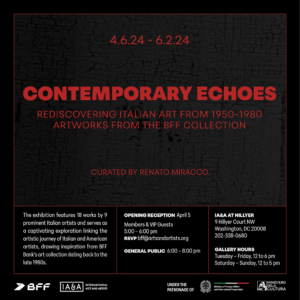“Initially, I was drawn to the idea of primordial landscapes free of man-made structures. Over time, my interest in unexplored terrains has morphed into a fascination with the beginnings of life, and the connections we humans share with our surrounding geography—for instance, the parallel between rivers and the blood that flows through our veins, and the cave as a womb.”
In terms of process and medium, I began as an oil painter creating large scale paintings with vibrant colors. Over time, I wanted to achieve greater transparency and airiness in my work, and moved towards pen, ink and acrylic paint. Most recently, I have incorporated layered cut paper into my work, adding new textures and more dimension to my pieces. I have also created several layered non-rectilinear works on paper, further accentuating my interest in the organic and my desire to meld the spheres of painting and sculpture. Ultimately, I plan to continue developing my interest in science, philosophy and natural history to further investigate this idea of the human body as a habitat and environment in itself.”
You say that your travels have strongly influenced your work; Are there any specific sites or cultures that has inspired this exhibit?
Many pieces in this exhibit are inspired by my travels in the American Southwest national parks including Bryce, Zion and Joshua Tree. I am constantly amazed by the overwhelming abundance of life that can be found in unexpected places. Such subtleties and quiet beauty can be found in many dry desert landscapes if you look with open eyes.
How do you think your development of materials, from oil painting to textured work with cut paper, has influenced your pieces?
I have always considered myself first and foremost a painter, but over the years have started creating more dimensional, sculptural works. Many of my works are living, breathing organisms that can also be read as landscapes. While oil painting is enjoyable, it always felt a bit heavy, and I wanted to create work that was more light and airy. I have worked with cut paper for some time now and just recently starting working with cut canvas. I really like how canvas is durable and bendable and has different textures. I definitely want to keep experimenting with these canvas pieces for the near future.
How in your own words would you describe the relationship between the human body and the environment?
There are so many physical and conceptual parallels between land and the human body. Our bodies are ecosystems brimming with life. Blood flows through veins, just like the way water flows through a river. We have our own mountains, valleys and jungles just like the ones we see in the surrounding geography. Likewise, there’s a parallel between illness of the body and illness of the land, pollution. Given the increasing urgency regarding the health of our environment and climate change, it’s really important that we constantly evaluate and appreciate our connection to the land around us. If we don’t take proper care of it, we will also suffer.
You recently had a residency at Strathmore; can you tell us about your experience there and how it has helped you grow as an artist?
The Strathmore Fine AIR program was a really great experience. It allowed me the time, resources and support to try new things and really push myself artistically. It was during this period that I first began experimenting with dimensional works on paper and created a series that is the precursor to my current body of work. Many of my first pieces could be read as both miniature landscapes and organisms, reflecting my desire to create living, breathing works.
Also, during the program I got to interact with a community of artists and received regular feedback on my pieces that was invaluable. In addition, I enjoyed working with my mentor artist and creating collaborative work over the course of a year; that was a totally new process for me, and I look forward to future opportunities to collaborate artistically.
What other artists do you take inspirations from?
There are so many! I’ve always admired Henri Matisse for his great use of color and line. More recently, I’ve been looking at work by Sam Gilliam, Katharina Grosse, Mary Little and Jackie Tileston, to name a few.


